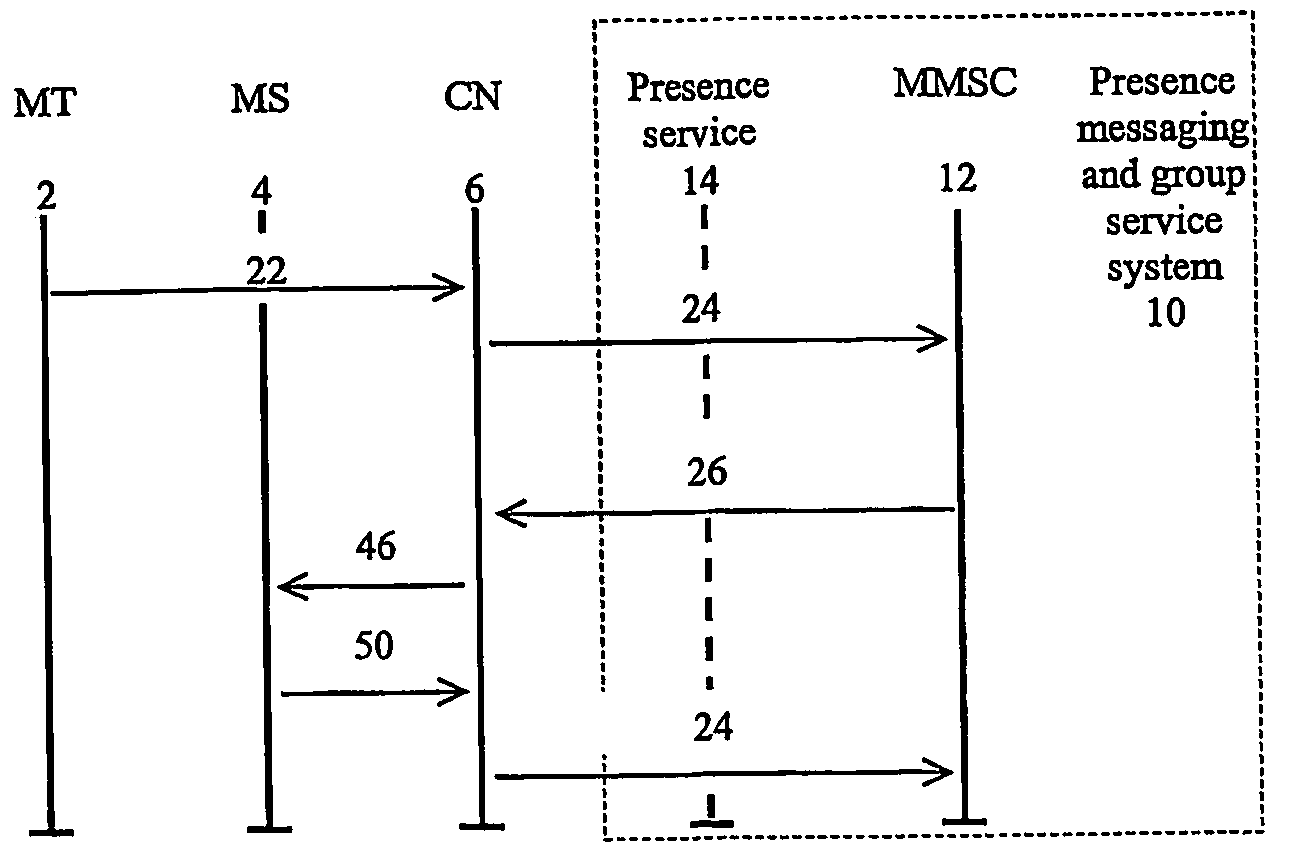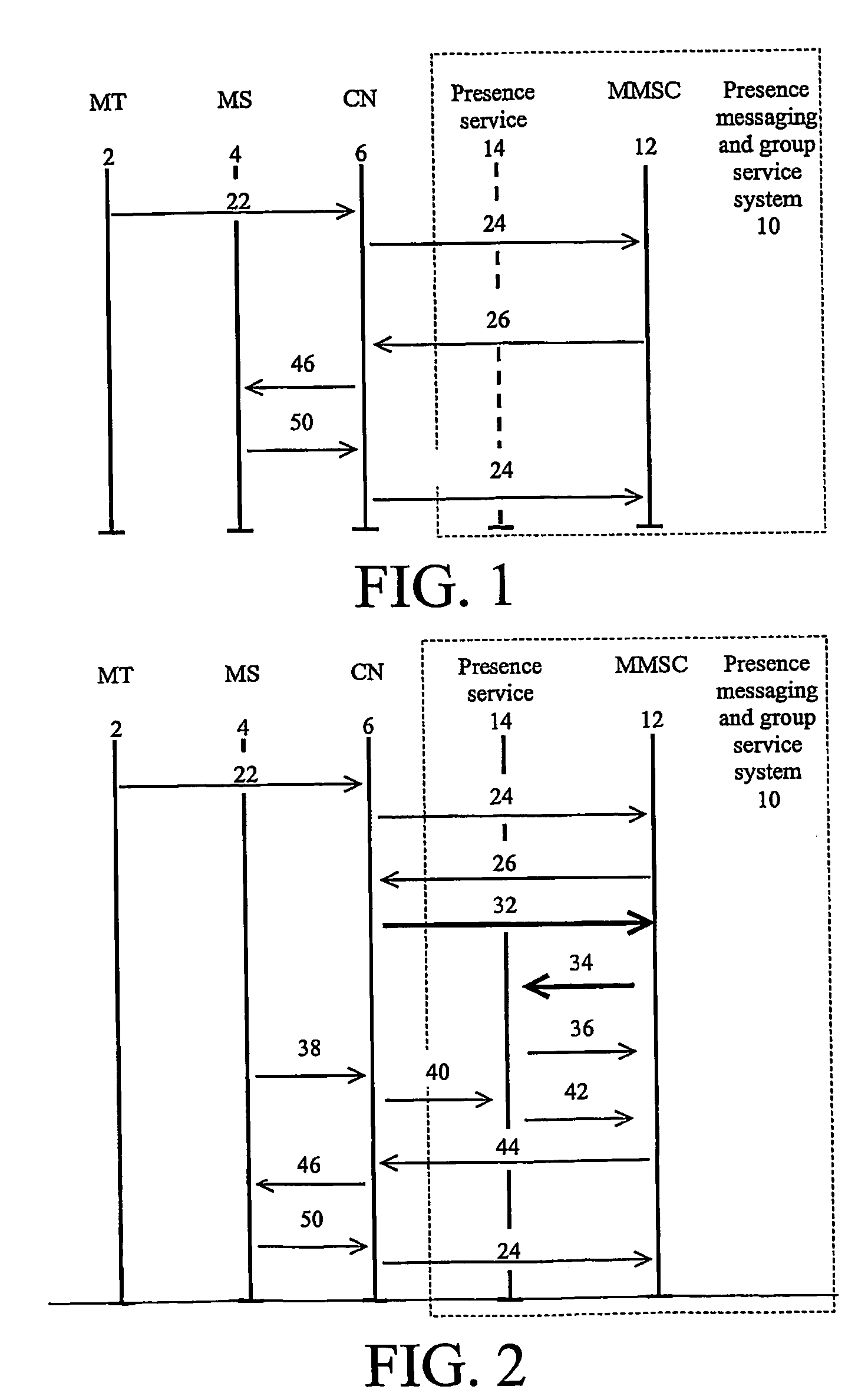Method and device for delivering messages to mobile terminal devices in accordance with a user selectable attainability status
a mobile terminal and attainability technology, applied in the field of cellular communication networks, can solve the problems of risking an overflow of the message memory of the terminal device, increasing the amount of data to be transferred for the multiple delivery attempts of a single message, etc., and achieve the effect of reducing unnecessary data transfer
- Summary
- Abstract
- Description
- Claims
- Application Information
AI Technical Summary
Benefits of technology
Problems solved by technology
Method used
Image
Examples
Embodiment Construction
[0037]FIG. 1 is a flowchart of a successful delivery of a MMS in a communication network. In the first step a mobile terminal 2 transfers 22 a multimedia message (MM) to a communication network (CN) 6. The communication network 6 can be one or more base transceiving systems, base stations, repeaters or service providers or any other relaying elements in the respective communication network. The message is transferred from the CN 6 to the Multimedia Message Service Center (MMSC) 12 (in the role of said SFE) in the presence messaging and group services system 10 (Presence Messaging and Group System). This describes that the mobile terminal 2 submits a message to the store and forward entity 12. The presence messaging and group services system 10 is depicted to indicate that the method is not restricted to a single communication network, but can be applied to communication network clusters, of different communication networks connected via gateways such as e.g. personal mobile gateways...
PUM
 Login to View More
Login to View More Abstract
Description
Claims
Application Information
 Login to View More
Login to View More - R&D
- Intellectual Property
- Life Sciences
- Materials
- Tech Scout
- Unparalleled Data Quality
- Higher Quality Content
- 60% Fewer Hallucinations
Browse by: Latest US Patents, China's latest patents, Technical Efficacy Thesaurus, Application Domain, Technology Topic, Popular Technical Reports.
© 2025 PatSnap. All rights reserved.Legal|Privacy policy|Modern Slavery Act Transparency Statement|Sitemap|About US| Contact US: help@patsnap.com


